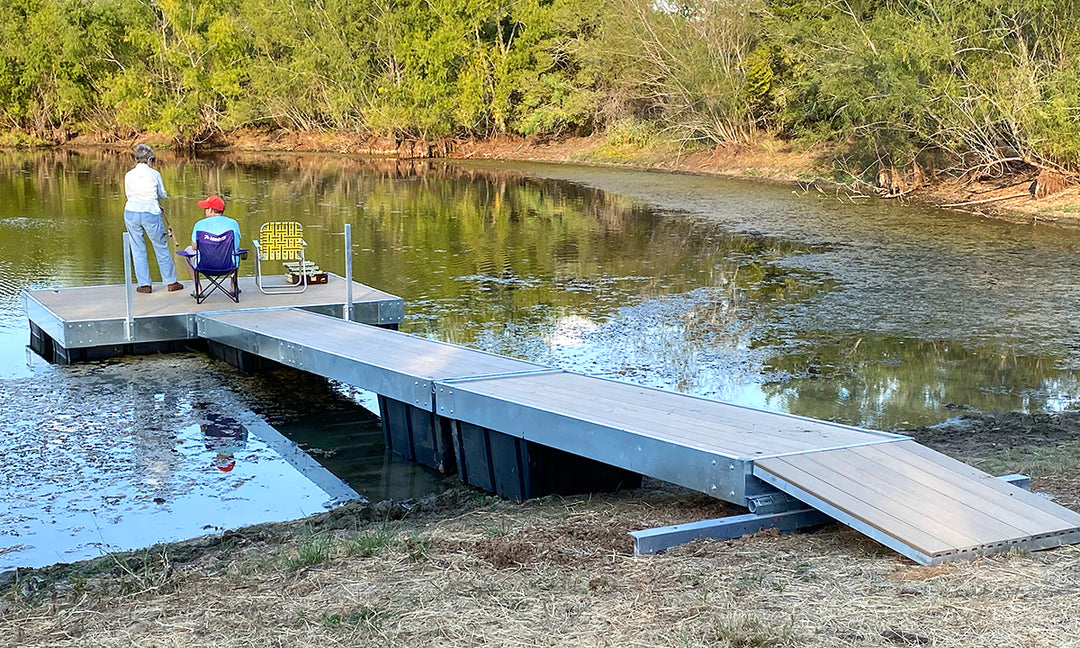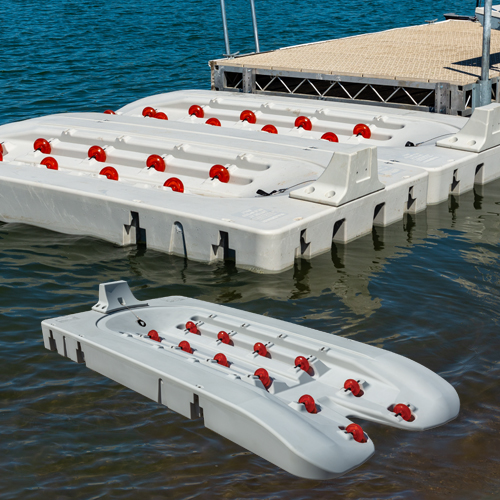Maximizing Your Outdoor Area with Specialized Floating Dock Services
Maximizing Your Outdoor Area with Specialized Floating Dock Services
Blog Article
Upgrade Your Beachfront With Resilient Floating Docks
Upgrading your beachfront with durable floating docks can dramatically boost both performance and aesthetics, providing a versatile service for numerous water activities. These frameworks are created to adjust to ever-changing water degrees, making certain safety and security and ease of access throughout the seasons. With a variety of products readily available, including low-maintenance alternatives and standard wood, picking the best dock can match your personal design and satisfy practical requirements. Nonetheless, understanding the subtleties of installment and maintenance is vital for making certain longevity and performance. What variables should you take into consideration when making this investment?
Benefits of Floating Docks
Floating docks deal a wide variety of benefits that boost their appeal for various maritime applications. Unlike traditional set docks, floating docks increase and fall with the tide, making sure consistent availability for boats and watercraft regardless of ecological problems.
In addition, floating docks are simpler to set up and relocate, supplying adaptability for seasonal or short-term use. Their modular layout permits personalization to fit specific demands, whether for personal marinas, residential watersides, or business applications.
In addition, floating docks produce very little disruption to the aquatic setting, maintaining local ecosystems and decreasing the chance of disintegration. They also supply improved security and security for customers, as their buoyant nature uses a much more forgiving surface than stiff structures.
Moreover, floating docks can assist in a varied series of activities, such as fishing, swimming, and leisure boating, making them a valuable possession for waterfront development. Their adaptability and functionality make floating docks a preferred option for a range of maritime jobs.
Choosing the Right Products
Selecting proper materials for floating docks is vital to their longevity, efficiency, and total performance. When choosing materials, take into consideration aspects such as ecological exposure, maintenance requirements, and structural stability. Typical materials consist of timber, plastic, aluminum, and composite options, each offering unique advantages and drawbacks.
Wood, while cosmetically pleasing, calls for regular maintenance to stop rot and degeneration. Pressure-treated wood can boost durability, yet it might still catch water damage over time. Plastic floats, commonly made from high-density polyethylene, are resistant to deterioration and need very little upkeep, making them an attractive choice for low-maintenance applications.
Aluminum is an additional sensible option, understood for its toughness and lightweight homes. It is immune to rust and can withstand harsh climate conditions, although it may be a lot more expensive than other materials. Composite products integrate the most effective qualities of wood and plastic, providing a low-maintenance and resilient choice that imitates the look of wood without the connected downsides.
Eventually, the selection of material should line up with the planned use, ecological factors to consider, and budget restrictions, making certain a sturdy and practical floating dock that fulfills your certain demands.
Installation Process Summary
The effective setup of a drifting dock relies on cautious preparation and implementation, guaranteeing that it operates successfully in its intended atmosphere. The very first step involves analyzing website problems, including water depth, coastline attributes, and dominating weather condition patterns, which will inform the dock layout and anchoring system.
Adhering to the site analysis, the following phase is to prepare the floating dock components. This consists of setting up the frame, securing drifts, and attaching any type of necessary equipment. It is crucial to why not look here guarantee that all links are robust and waterproof to hold up against marine conditions.
When the dock is constructed, the installation procedure commences with placing the dock in the water. This can involve a crane or other training equipment, specifically for larger structures. Appropriate alignment is crucial for functionality and safety and security.

Maintenance Tips for Durability
Normal maintenance is important for guaranteeing the longevity and ideal performance of a drifting dock. To accomplish this, start with regular examinations a minimum of two visit this website times a year, focusing on the honesty of the dock's structure, consisting of the flotation tools and attaching hardware. Try to find indicators of damage, wear, or deterioration, and resolve any kind of issues immediately to avoid further degeneration.
Cleansing is one more vital aspect of maintenance. Remove particles, algae, and barnacles from the dock's surface to avoid unsafe problems and preserve visual appeal. Use a mild detergent and a soft brush to stay clear of harming the dock's products.
Furthermore, guarantee that the dock is appropriately anchored and secured to endure seasonal adjustments in water degrees and climate condition. Examine the anchoring system for stability and make adjustments as essential.
Enhancing Your Exterior Visual
To produce a visually attractive outdoor space, including a floating dock can dramatically enhance the total aesthetic of your waterside residential or commercial property. Floating docks are not only practical but can likewise act as a striking centerpiece that matches the natural environments - floating dock services. Available see this in different materials and layouts, these docks can be customized to match your residential or commercial property's architectural design and landscape
The addition of decorative components, such as integrated lighting or stylish railings, even more boosts the dock's visual appeal. Take into consideration using all-natural wood finishes, which blend perfectly with the environment, or choosing modern products like aluminum or composite decking that provide a streamlined, modern appearance.
Strategically putting planters or seating locations on or around the dock can produce inviting areas that encourage relaxation and enjoyment of waterfront views. Furthermore, including colors and textures that integrate with your landscape will certainly produce a cohesive visual throughout your exterior area.

Conclusion

Updating your beachfront with sturdy floating docks can dramatically boost both functionality and appearances, giving a flexible service for different water tasks. Unlike typical set docks, floating docks surge and fall with the trend, ensuring consistent access for boats and boat regardless of environmental problems.Picking ideal materials for floating docks is essential to their longevity, performance, and total efficiency.As soon as the dock is set up, the setup procedure starts with positioning the dock in the water.In summary, floating docks offer many advantages, including flexibility to water degree modifications and a range of material choices.
Report this page